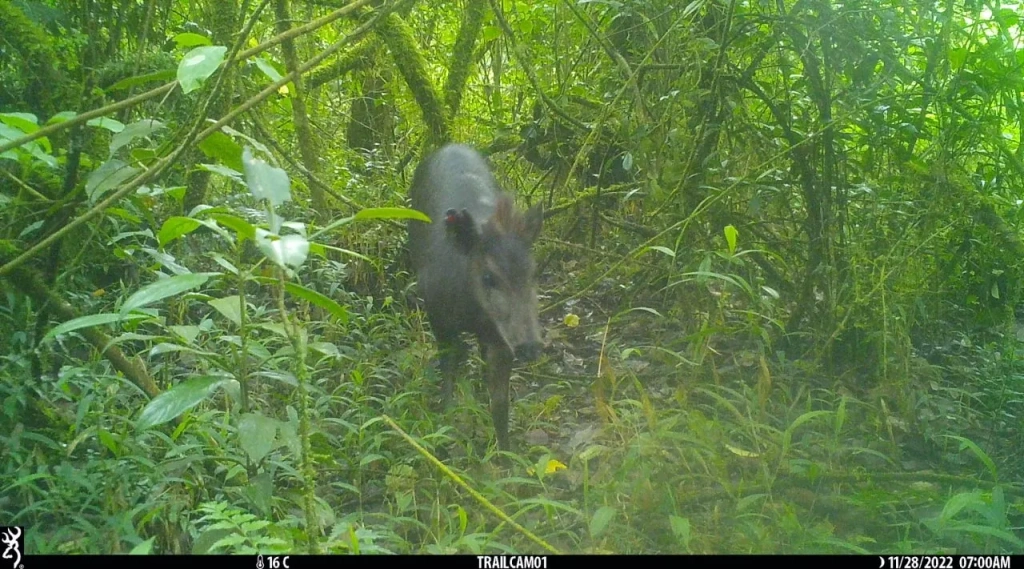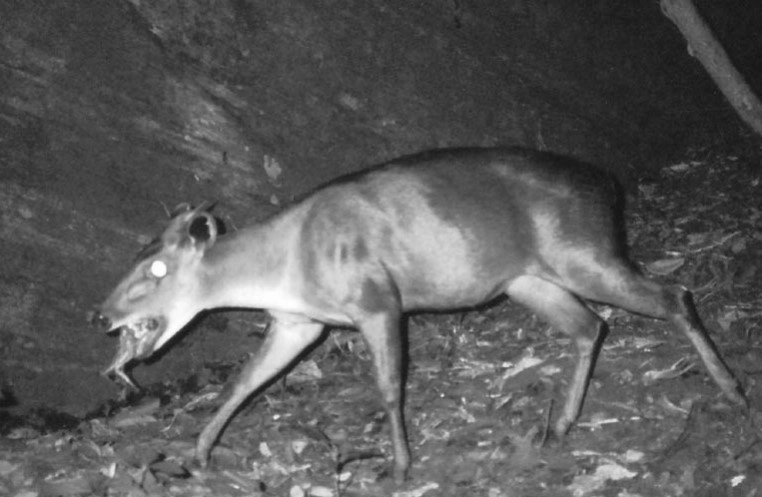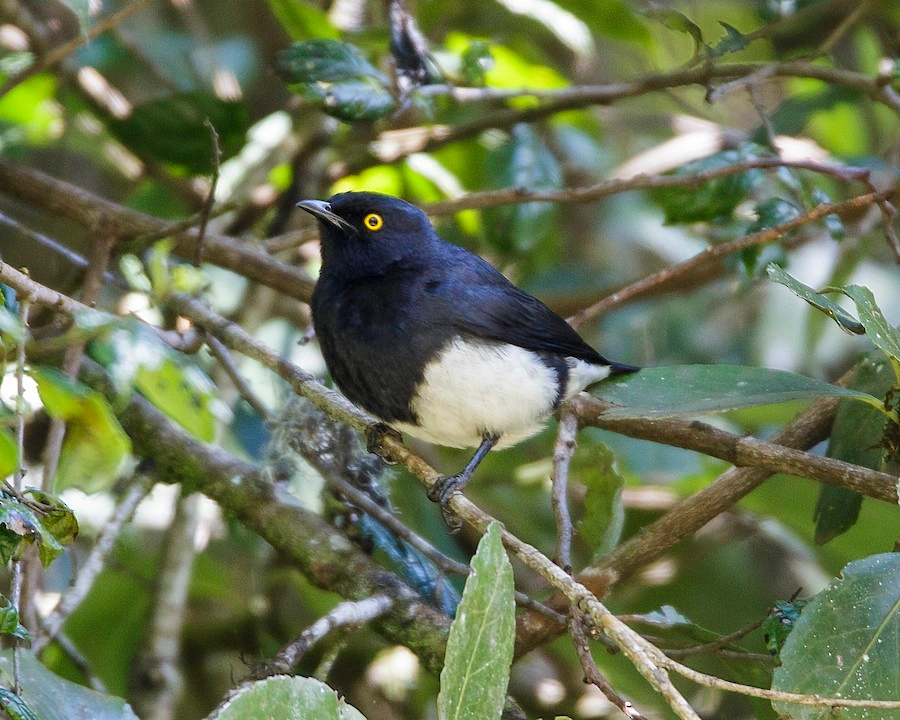In the forests of Kilimanjaro, you'll find small antelopes known as Abbott's duikers. This species, endemic to Tanzania, is rarely studied because duikers tend to vanish at the first sign of danger.
Despite this challenge, our team is excited to share our photos of Abbott's duikers and provide insights into their way of life. In this article, we’ll explore where these duikers live, the meaning behind their name, and why they are considered endangered.
What does the name "Abbott's duiker" mean?
The name "duiker" comes from either the Afrikaans word duik or the Dutch duiken, with both words meaning "." These Tanzanian endemics are renowned for their ability to vanish into the bushes when they sense danger. The “Abbott's” part of their name honors the scientist who first described them.
Sometimes you'll see the name written with just one "T" as "Abbot's duiker." This is simply a common mistake.
How rare is Abbott’s duiker?
Abbott's duikers are incredibly rare and hard to study. Sightings of these antelopes are so infrequent that most of what we know comes from their droppings, photos and videos from camera traps, and comparisons with other duiker species. The first photograph of such duiker wasn’t published until 2005, and it was captured not by a person, but by a camera set up in the forest.
The exact population of Abbott's duikers is unknown, but estimates suggest there are no more than 1,500 individuals, and their numbers continue to decline.
Why is Abbott's duiker endangered?
Abbott's duikers are being trapped for their meat, and their forest habitats are being cleared. That results in the loss of both their safe spaces and food sources. As humans continue to cut out the forests, many animals, including Abbott's duikers, are increasingly at risk. They are considered an endangered species.
Where do Abbott's duikers live?
You can find these duikers only in a few mountainous forests in Tanzania:
- Udzungwa Mountains;
- West Usambara Mountains;
- Mount Kilimanjaro;
- Southern Highlands;
- Rubeho Mountains.
There is also a suggestion that tiny populations may have survived in the high-altitude Kitulo National Park and on Mount Rungwe. However, their elusive and nocturnal nature makes them difficult to observe.
In summary, Abbott's duiker is one of the rarest species among all duikers. To learn about other duiker species in Africa, visit our blog. There, you'll find information about their habits and the unique traits of these elusive forest animals.
How did our team capture photos of Abbott’s duiker?
Some Altezza Travel team members live in Machame, on the southern slope of Kilimanjaro near the forest edge. While our main focus is organizing top-notch expeditions on Kilimanjaro, running a successful business in Tanzania also means engaging with the local community. Our projects often contribute to Altezza Travel’s social mission, including initiatives that focus on wildlife and plant conservation.
For example, we are involved in the major Serengeti De-snaring project, where patrolling rangers locate and remove poacher traps. Altezza Travel also supports the Mkomazi Black Rhino Sanctuary with donations. You can read about the baby rhino we took under our care. By the way, we've also worked with duikers. Here’s the story of Nyasi, a little antelope we nurtured back to health.
In the Kilimanjaro region, we buy deforested land to replant it with trees. During dry seasons, we actively participate in fighting forest fires on Mount Kilimanjaro and have even installed fire-fighting containers in the national park. We are deeply interested in the life of the Kilimanjaro forest, studying its birds and other forest inhabitants.
We set up several camera traps in the forest intending to discover if any rare animals were present. We captured photos of blue monkeys, honey badgers, bush pigs, large birds, and other familiar residents of the local forests. However, we were astonished when such a rare animal as Abbott’s duiker appeared on our cameras.
In October 2022, a duiker with a red crest, a distinctive feature of these antelopes, appeared on camera. Since these duikers are primarily nocturnal, it’s notable that this one was captured during the day. Also, take a look at its damaged right ear—it might indicate a recent encounter with a predator.
A few days later, the same animal appeared in front of the camera again, but this time at a more typical duiker hour—at night.
Another one of our cameras captured a different duiker of the same species. This one had an intact ear and a distinct facial coloration. It appeared during the day. You can see it in the very first photo in this article.
Several users on iNaturalist, a popular network for professional biologists and enthusiasts, confirmed that these were indeed Abbott’s duikers. These photos prove that these rare antelopes inhabit the forest on Mount Kilimanjaro.
What do we know about Abbott’s duikers?
Members of this duiker species are quite large and considered giants compared to others. Adult Abbott's duikers can weigh up to 60 kilograms (132 pounds), while most other duikers weigh less than 25 kilograms (55 pounds). They typically reach a shoulder height of 65–75 centimeters (26–30 inches). Both males and females have well-developed horns, about 10 centimeters (4 inches) long. Their primary body color is reddish-brown, reflected in their species name, spadix ("reddish-brown" in Latin). Their crests are often bright orange, though they can sometimes be pale gray.
Animal Card:
Common name: Abbott's duiker
Scientific name: Cephalophus spadix
Class: Mammals
Continent: Africa
Lifespan: 11 years
Diet: Herbivorous
Size: 70 cm/27 inches at the shoulder
Weight: 55 kg/120 pounds
Conservation status: Endangered (EN)
Current population status: Declining
While their physical appearance is well-documented, genetic research is limited, with only one scientific paper published in 2014. Their behavior remains largely a mystery, as they are both hard to find and difficult to study due to their primarily nocturnal habits.
Abbott's duikers prefer montane forests, dense thickets, and swamps. They typically live at elevations between 1,300 and 2,800 meters (4,300–9,200 feet) above sea level. In areas with abundant food and safe conditions, a single duiker will establish a territory of roughly 1 square kilometer (0.4 square miles). However, in less ideal environments, they may require up to 10 times more space. These territorial animals tend to live solitary lives.
In the wild, their primary threat comes from leopards. In more open areas, they are also hunted by lions, spotted hyenas, pythons, and crowned eagles.
Their primary activity, searching for food, takes place at night. During the day, duikers prefer to rest, hiding in dense undergrowth and tall grasses. They mainly feed on fruits, leaves, flowers, and other plant parts. However, on one occasion, a researcher's camera trap captured an Abbott's duiker carrying what appeared to be a small animal, possibly a frog, in its mouth.
Given that other duiker species have been observed eating bird eggs and even hunting low-flying birds, it's not entirely surprising that these antelopes can show carnivorous behavior. However, this is relatively rare.
How did William Abbott discover Abbott’s duiker?
Abbott's duiker was first described by the American scientist William Louis Abbott. He was a physician and naturalist with a passion for exploration. Throughout his travels, Abbott collected numerous specimens of plants and animals from around the globe. In addition to his natural history collection, he amassed an ethnographic collection of artifacts, which he later donated to various museums, particularly the Smithsonian Institution in the U.S. Living in the late 19th and early 20th centuries, Abbott’s contributions to science remain significant even a century after his expeditions.
In 1888–89, Abbott arrived with an expedition to Kilimanjaro, where he discovered and described the large duiker. After that, there were almost no new observations of Abbott's duikers for a century, and knowledge about them remained stagnant. Interest in them was renewed in the past 30 years.
William Abbott continued to travel and document animals and plants until the 1920s. He visited Madagascar and other Indian Ocean islands, as well as India, Singapore, and China. After building a schooner, he spent 10 years sailing between the islands of Southeast Asia, actively expanding his tropical collection. Even after becoming partially blind due to an illness, he managed to visit Haiti and the Dominican Republic.
Many animals are named after Abbott. Some of the most notable include Abbott's grey gibbon, Abbott's crested lizard, and Abbott's day gecko (Phelsuma abbotti).
There are also birds named after him, such as Pygmy Cuckooshrike (Celebesica abbotti), Abbott’s Booby, and Abbott's Starling.
Abbott’s Starling
While Abbott's duiker is endemic to Tanzania, Abbott’s Starling is found in both Tanzania and neighboring Kenya, but only in a few small, isolated areas. These include the forests of Kilimanjaro and Mount Kenya, among a few other regions. The starling’s habitat is fragmented, and the ongoing loss of forestland is a major threat to its survival. In 2020, the species was listed as endangered on the IUCN Red List. The current population is estimated to be between 1,000 and 2,500 adults, and unfortunately, their numbers are still declining.
These birds inhabit montane forests at elevations between 1,800 and 2,600 meters (5,900 to 8,500 feet) above sea level. They prefer tall trees with wide canopies, where they can hunt for insects and find fruit. One of their favorite treats is the fruit of the African dogwood (Cornus volkensii).
Abbott's Starlings live in small flocks and move short distances based on the fruiting of nearby trees. Finding and identifying them often requires climbing high into the forest. Their plumage, like all starlings, is iridescent. The head, back, and chest are jet black, while the sides and belly are creamy white. Males and females look alike.
In the future, we plan to locate and photograph this relatively rare bird on Kilimanjaro and will, of course, share the results with you. In the meantime, we invite you to read about the Long-billed Tailorbird, another fascinating bird endemic to Tanzania. With very few remaining, we are collaborating with Nature Tanzania to help preserve their population in the Amani Forest in northeastern Tanzania.
Tanzania is home to many animals that are much easier to find and photograph than Abbott's duikers. Altezza Travel organizes safaris in Tanzania's national parks. We invite you to join us and explore the wilderness to observe the life of African wildlife.
All content on Altezza Travel is created with expert insights and thorough research, in line with our Editorial Policy.
Want to know more about Tanzania adventures?
Get in touch with our team! We've explored all the top destinations across Tanzania. Our Kilimanjaro-based adventure consultants are ready to share tips and help you plan your unforgettable journey.





















